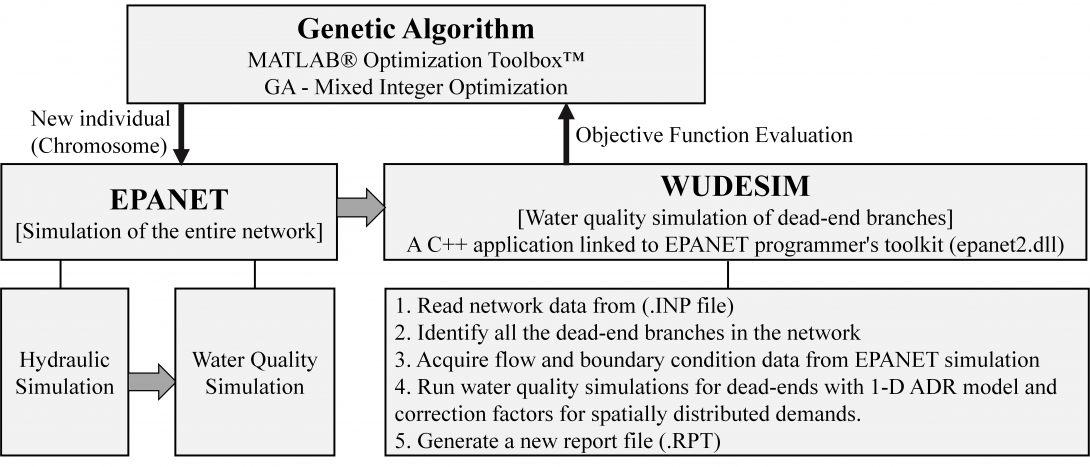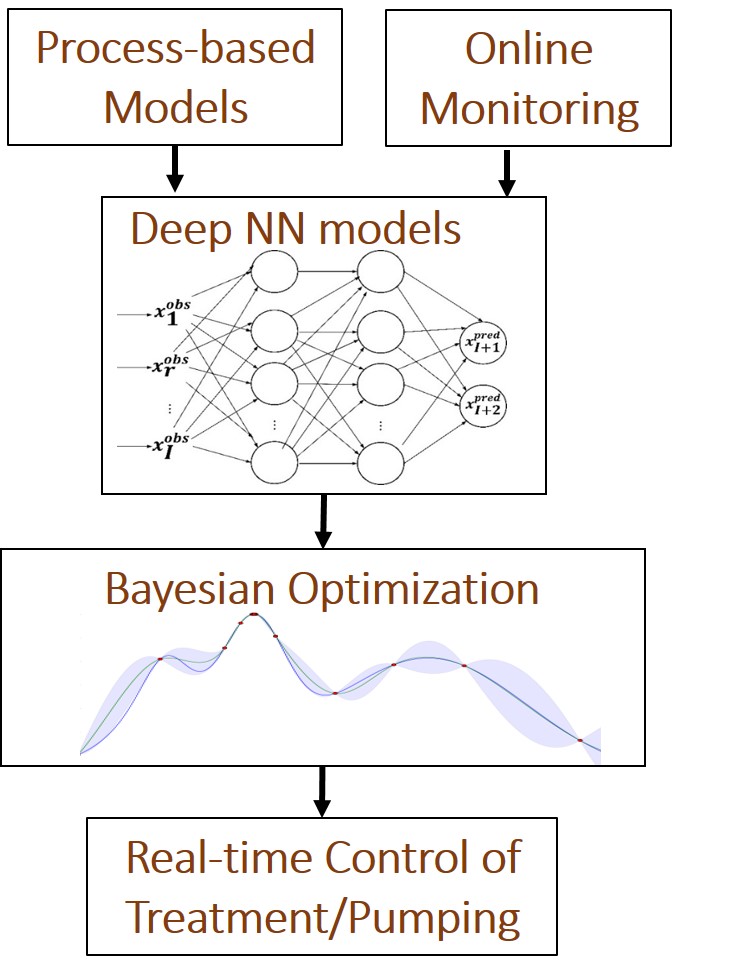Real-time Optimization & Control
1- Optimization of Booster Chlorination Systems Heading link
In this study, we investigated the impact of implementing an advanced water quality model for simulating the dead-end sections of drinking water distribution networks on the outcomes of booster chlorination optimization. An advection-dispersion-reaction transport model that accounts for the realistic spatial distribution of water demands along dead-end pipes is linked to a genetic algorithm to find the optimal layout and operation of booster chlorination stations. The objective function is formulated and solved to find the optimal locations and chlorine-dosing schedules of the booster stations that minimize the total costs of design and operation of the booster system, while maintaining a sufficient residual throughout the distribution network. The results highlight the importance of considering dispersive solute transport, as well as the excessive residence times encountered in the dead-end branches, in the water quality simulations conducted for network optimization problems. While this study addresses the optimization of booster chlorination systems, its implications extend to a wide array of network optimization applications, including pump scheduling for water quality optimization, optimal sensor placement for reactive contaminant detection, and design of real-time boost-response systems.
pic6 Heading link

A. A. Abokifa, A. Maheshwari, R. D. Gudi, and P. Biswas (2019). “Influence of the Dead-End Sections of Drinking Water Distribution Networks on the Optimization of Booster Chlorination Systems” Journal of Water Resources Planning and Management. In press, DOI: 10.1061/(ASCE)WR.1943-5452.0001125.
2- Real-time Control of Water Quality using Surrogate Data-Driven Models Heading link

Real-time optimization of the water quality can be achieved by linking water treatment processes to the real-time conditions in the distribution system. Previous studies typically coupled computationally expensive evolutionary optimization routines, e.g. Genetic Algorithms, with complex process-based models, such as EPANET/EPANET-MSX, which inhibits real-time execution. In this study, we are coupling data-driven water quality models with efficient optimization routines to enable water quality management in real-time. Deep learning is used to build surrogate data-driven models that can imitate the complexity of the process-based models for disinfectant decay, DBP formation, and lead release, but at a significantly lower computational cost. Periodic training of the data-driven models is automated by utilizing online monitoring data and leveraging high performance distributed computing to efficiently parallelize the training algorithms. Bayesian optimization routines are implemented to efficiently optimize the resulting black-box objective functions by employing Gaussian processes to balance exploration vs exploitation. This integrated framework is implemented for the real-time optimization of disinfectant dosing and corrosion control treatment to optimize the water quality in the system while minimizing treatment/energy costs.